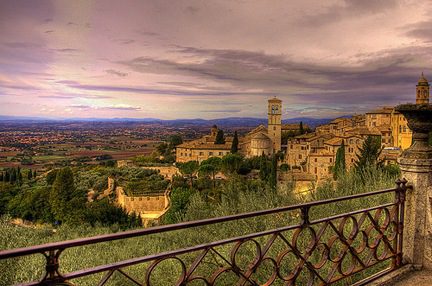Just next the magnificent Basilica of St. Francis, you can visit also Bosco di San Francesco (St. Francis’ Wood), an amazing example of Italian rural landscape of 64 acres and over 800 years of history running through woodland and cultivated fields , olive groves and glades .
You enter Bosco di San Francesco through a door located in the wall in front of the Basilica. Once in the Forest – the first part belongs to the Franciscan friars – take a look at the walls, which is a long section of the perimeter of the city walls built in Roman times, in the second/ first century BC, and expanded in XIII / XIV century to cope with the increasing population of Assisi.
Proceeding along the path of the Wood you will leave the bridge of the Gauls on the left. Continuing the journey towards the valley floor, you can see the plain profiles of some buildings. These are the remains of a complex architectural system of religious and rural nature in origin including a hospital, a Benedictine monastery and a church, and adjacent a mill belonging to the convent .
>> Do you want to visit Assisi? Check it out now of the best hotels in Assisi Italy
>> Do you want to discover Assisi’s treasures? Check it out now of the best farmhouses in Assisi.
A wooden walkway through the remains of the original walls , once exceeded is the gateway to the ancient Hospitalis Pontis Gallorum ( Hospital del Ponte dei Galli ), of which survives part of the outer limestone Subasio on the long side of the east and on the adjacent side to the south. Traces of possible niches and buttresses whose function has not yet been identified are still visible. From the analysis of the traces walls, partially buried, there were no points of contact consistent with the outer wall and is therefore very likely that the latter was separated from the buildings inside the perimeter. Active since 1250 and until the second half of the fourteenth century , the hospital passed , around the turn of the century, from the management of the friars to that of the Benedictine nuns, both still under the bishop authority.
If you continue the path you will arrive to the Bosco di San Francesco’s Visitor Center, created by the FAI within the canonical Benedictine . From here you can access the small Church of Santa Croce, originally from the mid-thirteenth century and later changed, during the seventeenth century . Holy Cross can be ascribed to the so-called ” chapels ” , places of worship very small , with a minor role compared to the churches, destined to communities in the country.


Comment (0)